
Concept explainers
(a)
Interpretation: To indicate whether the intermediate
Concept introduction: In the glycolysis
The block diagram to represent an overview of glycolysis is as follows:
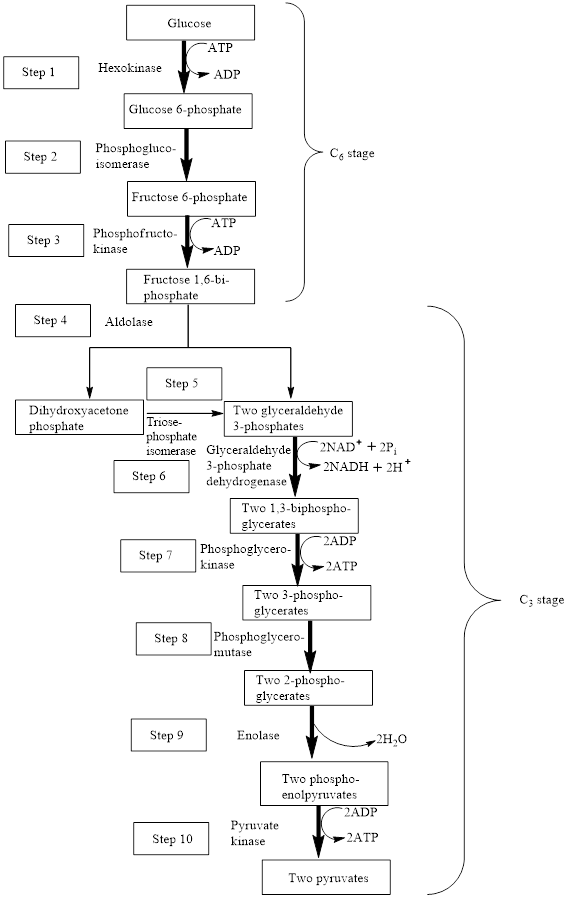
From the above diagram, it is concluded that in the overall process of glycolysis, two stages are present.
a) Steps 1 to 3 represents a six-carbon stage
b) Steps 4 to 10 represent a three-carbon stage
In the
In the
(a)
Answer to Problem 24.10EP
The intermediate
Explanation of Solution
The structure of
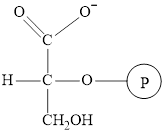
Here, denotes the
denotes the
The intermediate
The intermediate
(b)
Interpretation: To indicate whether the intermediate
Concept introduction: In the glycolysis metabolic pathway, a glucose molecule is converted into two pyruvate molecules. Two ATP molecules and NADH coenzymes are produced along with pyruvate.
The block diagram to represent an overview of glycolysis is as follows:

From the above diagram, it is concluded that in the overall process of glycolysis, two stages are present.
a) Steps 1 to 3 represents a six-carbon stage
b) Steps 4 to 10 represent a three-carbon stage
In the
In the
(b)
Answer to Problem 24.10EP
The intermediate
Explanation of Solution
The structure of
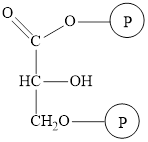
The intermediate
The intermediate
(c)
Interpretation: To indicate whether the intermediate
Concept introduction: In the glycolysis metabolic pathway, a glucose molecule is converted into two pyruvate molecules. Two ATP molecules and NADH coenzymes are produced along with pyruvate.
The block diagram to represent an overview of glycolysis is as follows:

From the above diagram, it is concluded that in the overall process of glycolysis, two stages are present.
a) Steps 1 to 3 represents a six-carbon stage
b) Steps 4 to 10 represent a three-carbon stage
In the
In the
(c)
Answer to Problem 24.10EP
The intermediate
Explanation of Solution
The structure of
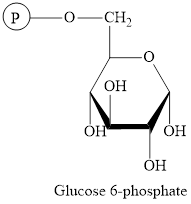
The intermediate
The intermediate
(d)
Interpretation: To indicate whether the intermediate
Concept introduction: In the glycolysis metabolic pathway, a glucose molecule is converted into two pyruvate molecules. Two ATP molecules and NADH coenzymes are produced along with pyruvate.
The block diagram to represent an overview of glycolysis is as follows:

From the above diagram, it is concluded that in the overall process of glycolysis, two stages are present.
a) Steps 1 to 3 represents a six-carbon stage
b) Steps 4 to 10 represent a three-carbon stage
In the
In the
(d)
Answer to Problem 24.10EP
The intermediate
Explanation of Solution
The structure of
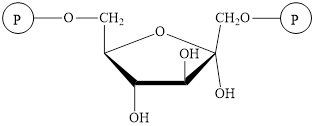
The intermediate
The intermediate
Want to see more full solutions like this?
Chapter 24 Solutions
General, Organic, and Biological Chemistry
- Describe what is meant by the terms blood sugar level and normal fasting level.arrow_forwardExplain why monitoring blood lactate levels might be a useful technique to gauge the amount of conditioning in an Olympic runner.arrow_forwarda) knowing how glycolysis works and the action of its enzymes, what would the structures of the products look like when fuculose-1-phosphate aldolase acts on fuculose-1-phosphate. b) one of the products should be familiar so what is it called and how is it used for energy?arrow_forward
 Organic And Biological ChemistryChemistryISBN:9781305081079Author:STOKER, H. Stephen (howard Stephen)Publisher:Cengage Learning,
Organic And Biological ChemistryChemistryISBN:9781305081079Author:STOKER, H. Stephen (howard Stephen)Publisher:Cengage Learning, General, Organic, and Biological ChemistryChemistryISBN:9781285853918Author:H. Stephen StokerPublisher:Cengage Learning
General, Organic, and Biological ChemistryChemistryISBN:9781285853918Author:H. Stephen StokerPublisher:Cengage Learning Chemistry for Today: General, Organic, and Bioche...ChemistryISBN:9781305960060Author:Spencer L. Seager, Michael R. Slabaugh, Maren S. HansenPublisher:Cengage Learning
Chemistry for Today: General, Organic, and Bioche...ChemistryISBN:9781305960060Author:Spencer L. Seager, Michael R. Slabaugh, Maren S. HansenPublisher:Cengage Learning- Chemistry: Matter and ChangeChemistryISBN:9780078746376Author:Dinah Zike, Laurel Dingrando, Nicholas Hainen, Cheryl WistromPublisher:Glencoe/McGraw-Hill School Pub Co



